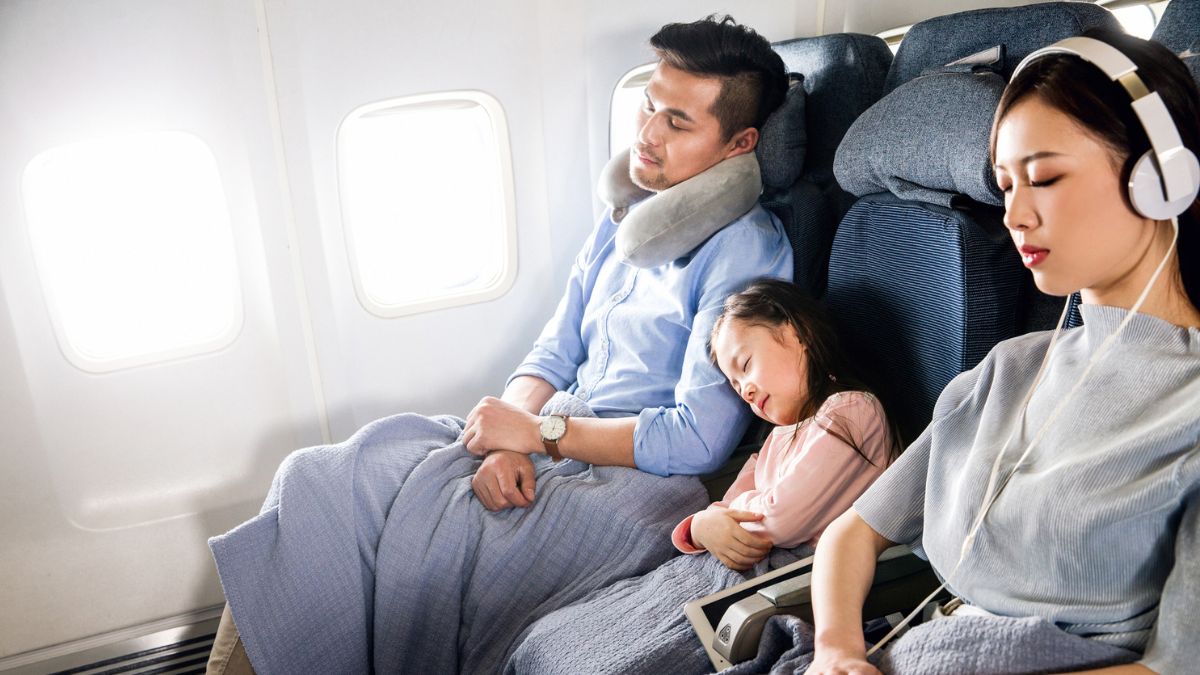
Ways to Stay Comfortable on Long Flights
Long flights can really take a toll on both body and mind, particularly when you’re crossing multiple time zones or spending eight-plus hours in the air. Whether you’re jetting off for business or pleasure, staying comfortable during extended air travel makes all the difference in how you feel when you finally reach your destination. The confined quarters, desert-dry cabin air, and limited ability to move around create a perfect storm of discomfort that catches even experienced travelers off guard. But here’s the good news: with some smart preparation and strategic thinking, you can turn what might be a grueling experience into something much more manageable.
Table of Contents
ToggleChoosing the Right Seat and Pre-Flight Planning
Your seat selection can make or break your long-flight experience; it’s honestly that important. Aisle seats give you the freedom to stretch out and make bathroom runs without playing the awkward “excuse me” game with your seatmates, while window seats provide that perfect spot to lean against and control over natural light. Exit rows and bulkhead seats usually come with generous legroom, though you’ll need to follow specific storage rules during takeoff and landing. Most airlines let you pick your seat when checking in online, and for longer journeys, those seat selection fees? They’re often worth every penny.
Dressing Appropriately and Layering for Temperature Control
Cabin temperatures have a mind of their own during long flights, which makes your clothing choices surprisingly important. Go for loose, breathable fabrics made from natural materials that won’t cut off circulation or start feeling uncomfortable after hours of sitting. Layering becomes your best friend because cabins typically start toasty during boarding but cool down significantly once you’re airborne, and the temperature near your seat depends heavily on those overhead air vents. Compression socks aren’t just for medical purposes; they genuinely help keep blood flowing properly and reduce the risk of circulation issues during extended sitting periods.
Staying Hydrated and Managing In-Flight Nutrition
Aircraft cabins maintain humidity levels around fifteen to twenty percent, which is basically desert-level dryness that’ll dehydrate you faster than you’d expect. Keep sipping water throughout your flight; roughly eight ounces each hour works well to combat that moisture-sucking cabin environment. Bring an empty reusable bottle through security and fill it up at water fountains near your gate, so you’ve got immediate access without waiting for drink service. Here’s where moderation matters: alcohol and caffeine both increase dehydration while potentially messing with your sleep, so go easy on them.
Incorporating Movement and Stretching Exercises
Sitting motionless for hours creates a recipe for stiffness, sluggish circulation, and mounting discomfort that’ll make you miserable. Stand up and take a stroll down the aisle every hour or two when that seatbelt sign’s off, even if you’re just heading to the restroom or stretching near the galley. You can do plenty without leaving your seat. Ankle circles, shoulder rolls, gentle neck stretches, and seated twists all help maintain flexibility and keep blood moving. Try repeatedly flexing and pointing your toes, alternately bringing your knees toward your chest, and squeezing then releasing your leg muscles to maintain healthy circulation in your lower body.
Creating a Restful Sleep Environment
Getting decent rest during long flights dramatically affects your overall comfort and how quickly you bounce back after landing, especially when time zones are involved. Bring the essentials for sleep: a supportive neck pillow that prevents that terrible strain from awkward sleeping angles. Eye masks block cabin lights and the glow from your neighbor’s screen binge-watching session, creating the darkness your body needs to naturally produce melatonin. While commercial passengers rely on basic noise-canceling devices, professional aviators who spend extended hours in cockpit environments often use pilot headsets to manage engine noise and maintain clear communication during long flights. For your comfort as a passenger, quality noise-canceling headphones or simple earplugs eliminate that constant engine drone and surrounding chatter that prevents truly deep sleep. Load up your device with calming music, white noise tracks, or meditation apps before boarding to help quiet racing thoughts and ease into restfulness. For international flights crossing multiple time zones, start adjusting your sleep schedule several days early by gradually shifting your bedtime closer to your destination’s schedule. Once meal service wraps up, recline your seat considerately and use that blanket to maintain a comfortable body temperature while you rest. Skip stimulating content on screens right before trying to sleep; that blue light really does interfere with your natural sleep rhythms.
Managing Entertainment and Mental Engagement
Mental comfort matters just as much as physical comfort on extended flights, so thoughtful entertainment planning becomes essential. Download movies, shows, podcasts, audiobooks, and music playlists to your devices before departure, since in-flight systems sometimes offer limited options or experience technical hiccups. Pack variety into your entertainment choices to match changing moods and energy levels throughout the journey, from gripping thrillers to lighthearted comedies or educational content that keeps your mind engaged. Load your e-reader or tablet with several books and magazines, making sure you’ve got enough reading material with good variety to last the entire flight.
Conclusion
Staying comfortable on long flights doesn’t happen by accident; it requires intentional preparation and ongoing attention to what your body and mind need. When you strategically choose your seat, dress in adaptable layers, stay properly hydrated, keep moving regularly, optimize conditions for sleep, and plan engaging entertainment, you’ll notice a real difference in your flight experience. These combined approaches tackle the various challenges of extended air travel head-on, from physical discomfort and dehydration to boredom and exhaustion. Keep in mind that everyone’s comfort preferences differ slightly, so testing different strategies on shorter flights helps you figure out what works best for you personally.


